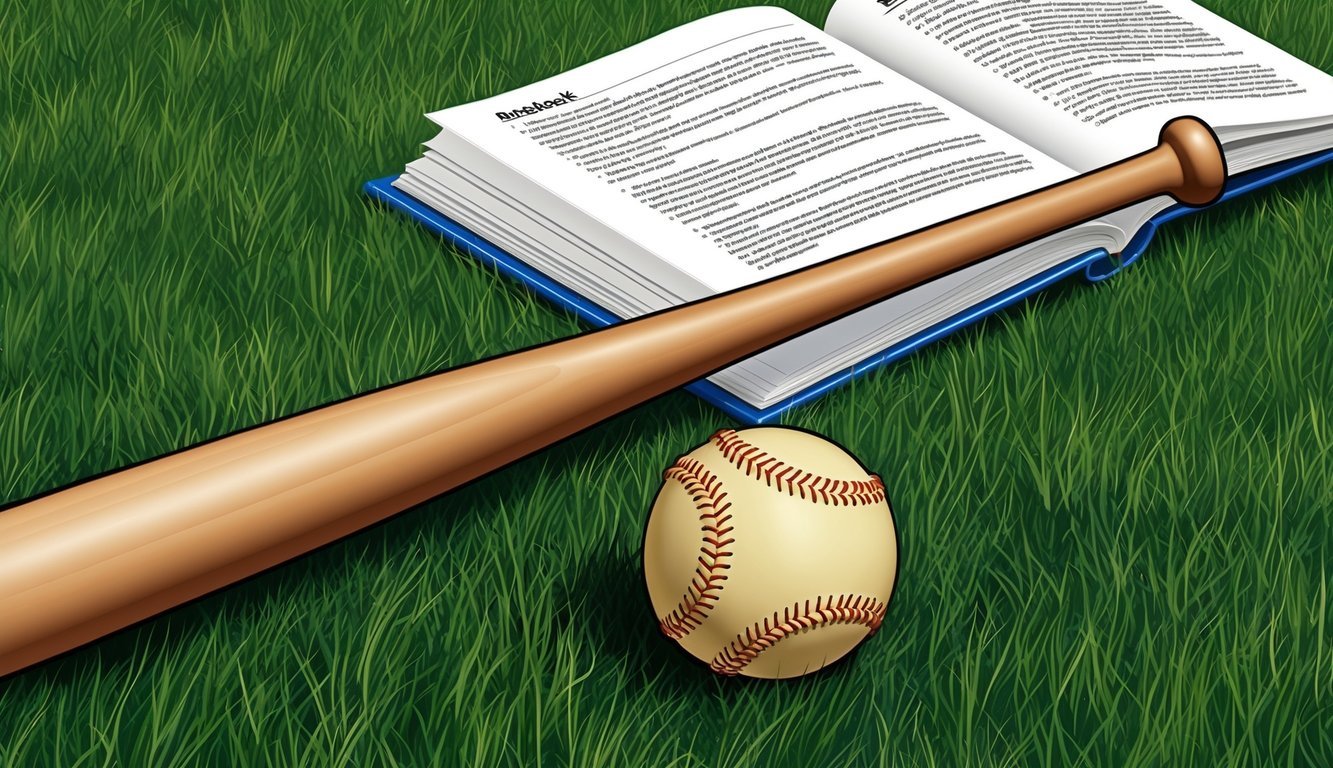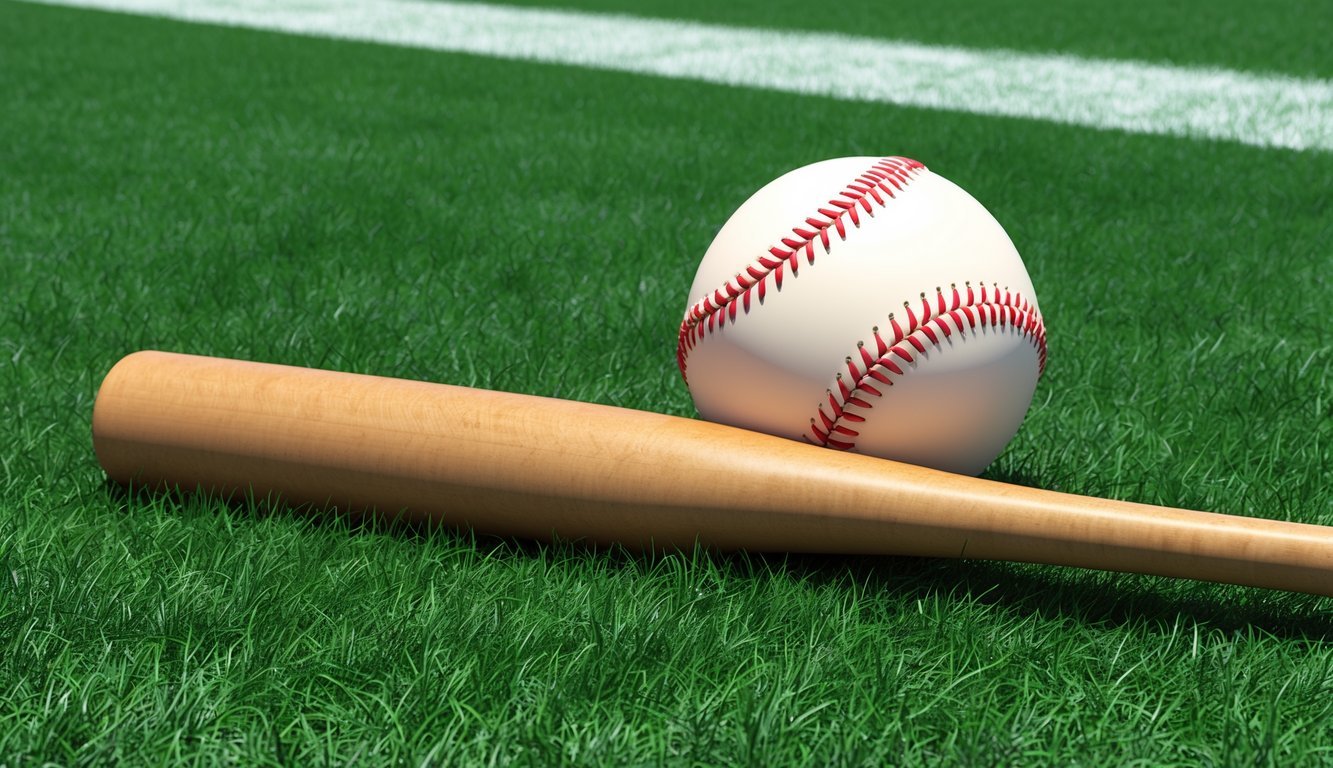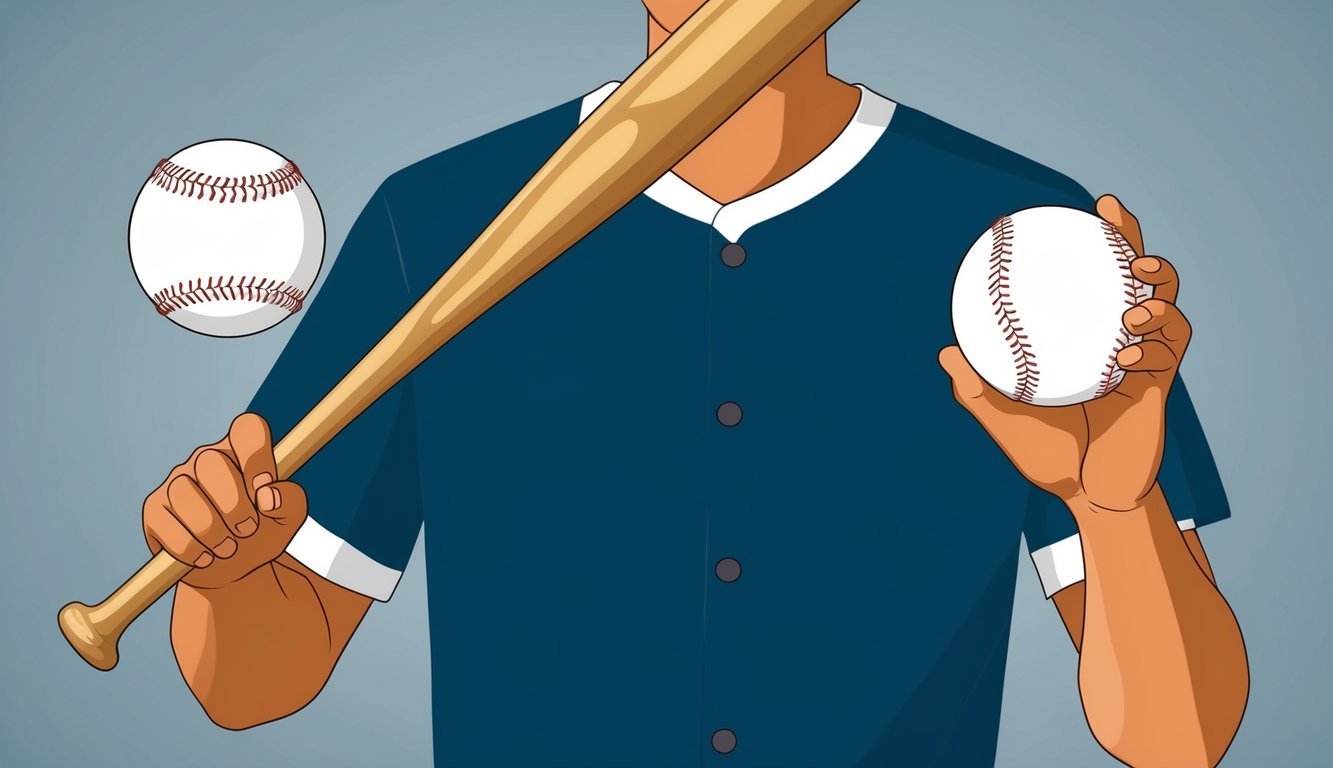Baseball and softball may seem similar at first glance, but their equipment requirements differ significantly.
Many players wonder if they can use a baseball bat for softball games. While you can physically swing a baseball bat at a softball, it’s not recommended and often against league rules.
Baseball bats and softball bats are designed with specific characteristics to suit their respective sports.
Softball bats typically have larger barrel diameters and more flexible handles compared to baseball bats.
These features help softball players generate more power and speed when hitting the larger, softer ball used in their game.
Using a baseball bat for softball could negatively impact a player’s performance.
The smaller barrel and stiffer construction of baseball bats make it more challenging to make solid contact with a softball.
Additionally, most softball leagues and organizations have strict regulations regarding bat specifications, which baseball bats generally do not meet.
Understanding the Equipment
Baseball and softball bats have distinct characteristics tailored to their specific sports.
The materials and designs used in these bats play a crucial role in player performance and safety.
Baseball and Softball Bat Comparison
Baseball bats are typically longer and heavier than softball bats.
They range from 26 to 34 inches in length and weigh between 18 and 36 ounces.
Softball bats, on the other hand, are usually 26 to 34 inches long but weigh 23 to 28 ounces.
The barrel diameter also differs.
Baseball bats have a maximum barrel diameter of 2.75 inches, while softball bats can be up to 2.25 inches for fastpitch and 2.25 to 2.75 inches for slowpitch.
Softball bats have a more balanced weight distribution to accommodate the larger, heavier ball and underhand pitching style.
Baseball bats focus on end-loaded designs for increased power against overhand pitches.
Material and Design Variations
Baseball and softball bats come in various materials, each with unique properties.
Wood bats, traditionally used in professional baseball, offer a classic feel and are made from ash, maple, or birch.
Composite bats, popular at youth and amateur levels, are engineered for optimal performance and durability, often providing a larger sweet spot than their wooden counterparts.
These bats are made from layered materials that can enhance power and reduce vibration upon contact.
Additionally, understanding the different types of wood for baseball bats is crucial, as each type affects the bat’s weight, flexibility, and overall performance.
Aluminum bats provide durability and a larger sweet spot.
They’re popular in youth leagues and college play.
Composite bats use advanced materials like carbon fiber, offering a lighter swing weight and larger sweet spot.
Some bats feature hybrid designs, combining metal handles with composite barrels.
These aim to blend the best qualities of different materials.
Bat designs also vary in terms of their end caps, grip materials, and barrel construction.
These elements influence factors like swing speed, vibration reduction, and overall performance.
Regulatory Considerations

League rules and safety standards play a crucial role in determining what equipment can be used in softball games.
These regulations aim to ensure fair play and protect players from potential injuries.
League Regulations and Requirements
Most softball leagues have strict guidelines about bat specifications.
The Amateur Softball Association (ASA) requires all fastpitch softball bats to have a 2-inch barrel diameter.
They must not exceed 34 inches in length or 31 ounces in weight.
Bats must also bear the ASA Certified 2004 stamp to be considered legal for play.
Other leagues may have slightly different requirements.
It’s essential for players to check their specific league’s rules before purchasing or using a bat.
Some organizations might allow certain baseball bats, but this is generally the exception rather than the rule.
Safety and Compliance
Using a baseball bat in softball can pose safety risks.
Softball bats are designed differently to account for the larger, softer ball used in the sport.
They typically have a larger sweet spot and are more flexible than baseball bats.
Compliance with league regulations is not just about following rules – it’s a matter of player safety.
Non-compliant bats can lead to unexpected ball behavior, potentially endangering fielders.
Players caught using illegal bats may face penalties, including ejection from games or suspension from the league.
To ensure compliance, many leagues conduct regular bat inspections.
Players should always verify their equipment meets current standards before stepping onto the field.
Performance Factors

Using a baseball bat for softball impacts several key performance aspects.
The physical differences between the sports and the unique properties of each bat type significantly influence a player’s ability to hit effectively.
Physical Differences Impacting Performance
Baseball and softball have distinct ball sizes and pitching styles.
Softballs are larger and heavier than baseballs, requiring a different approach to hitting.
Baseball bats typically have a smaller barrel diameter, which can make solid contact with a softball more challenging.
The underhand pitching in softball creates a different ball trajectory compared to baseball’s overhand throws.
This affects the swing path and timing needed for optimal contact.
Baseball bats may not provide the ideal weight distribution for the unique mechanics of softball hitting.
How Bat Properties Affect Game Play
The design features of baseball and softball bats cater to their respective sports.
Baseball bats often have a more end-loaded weight distribution, which can affect a player’s swing speed and control when hitting softballs.
Softball bats generally have a larger sweet spot to accommodate the bigger ball.
Using a baseball bat in softball may result in less power and more mishits due to the smaller barrel size.
The differences in bat length and weight between the two sports can also impact a player’s timing and momentum through the swing.
Baseball bats’ stiffer construction may not provide the flexibility needed for optimal softball performance.
This can lead to reduced bat speed and less efficient energy transfer to the ball.
Durability is another concern, as baseball bats may not withstand the repeated impact of heavier softballs as well as purpose-built softball bats.
Player Experience and Techniques
Transitioning from baseball to softball requires athletes to adjust their approach and refine their skills.
Players must adapt to different equipment and gameplay dynamics while honing techniques specific to softball.
Adaptation Strategies for Athletes
Players switching from baseball to softball face several challenges.
The larger ball and underhand pitching style demand modifications to batting stance and swing mechanics.
Athletes often need to widen their stance and adjust their grip to accommodate the softball bat’s different weight distribution.
Fielding techniques also require tweaking.
The bigger ball behaves differently, necessitating changes in glove positioning and catching techniques.
Infielders may find they need to play deeper, while outfielders must adjust to the ball’s altered flight path.
Baserunning strategies shift too.
With shorter base paths in softball, players must be quicker off the mark and more aggressive in their leads and steals.
Training Recommendations
To excel in softball, former baseball players should focus on specific drills.
Batting practice with softer tosses helps adjust to the arc of softball pitches.
Tee work is crucial for developing proper contact points and swing paths.
Fielding drills should emphasize quick hands and proper footwork.
Short-hop drills and reaction time exercises are particularly beneficial.
For pitchers transitioning to the underhand technique, windmill motion practice is essential.
Strength and conditioning routines should target core muscles and leg strength to support the different throwing and batting motions.
Flexibility exercises are vital, especially for pitchers adapting to the windmill motion.
Regular scrimmages against experienced softball players provide invaluable real-game experience.
This helps athletes internalize the unique rhythms and strategies of softball more quickly.
Choosing the Right Bat

Selecting the perfect bat for softball involves considering several key factors.
The right choice can significantly impact a player’s performance and enjoyment of the game.
Selecting for Leagues and Playing Style
Different leagues have specific bat requirements.
Fast-pitch and slow-pitch softball use distinct bat types.
Fast-pitch bats are typically lighter and more balanced for quick swings.
Slow-pitch bats are heavier with larger barrels for power hits.
Youth players often benefit from lighter bats with a more flexible handle.
Adult players may prefer heavier bats for increased power.
Bat length is crucial – a common test is placing the bat knob at the center of your chest.
If you can touch the barrel end with your fingertips, it’s likely a good fit.
Barrel size matters too.
Big barrels offer a larger sweet spot but may sacrifice swing speed.
Some leagues restrict barrel diameter, so check the rules before purchasing.
Cost and Longevity Considerations
Softball bats range widely in price.
Higher-end models often feature advanced materials and construction techniques, potentially offering better performance and durability.
However, expensive doesn’t always mean better.
Many affordable bats provide excellent value, especially for recreational players or those new to the sport.
Consider how often you’ll use the bat.
Frequent players might benefit from investing in a more durable, high-quality bat.
Occasional players can often get by with more budget-friendly options.
Some retailers offer expert advice.
For example, JustBats provides bat experts via email or live chat to help with selection.
They can answer questions about specific models, materials, and league regulations.
